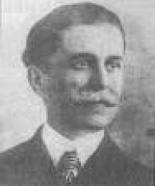7.4.1 Antonio Raffelin Estrada

Nicolás Ruiz Espadero was born in 1832 and died in Havana in 1890. A musician gifted with exceptional technique, despite having received only domestic training from his mother, a Spanish pianist of local prominence, he sought to emulate the great virtuosos who dominated the salons of Europe.
His encounter in 1854 with the novelistic Louisiana composer Luis Moreau Gottchalk strengthened his desire to open up to the world, always held back by an invincible shyness. His “Canto del guajiro” was published in Paris in 1874 by León Escudier; he also left behind a “Canto del esclavo,” a “Canto tropical,” and various contradanzas.
He was also a teacher, and in his home he took on several notable disciples, including Angelina Sicouret, Carlos Alfredo Peyrellade and the exceptional Ignacio Cervantes, who would continue his work in teaching.
His musical work was not limited to salon music; his Second Ballad, opus 57, composed in 1874 under the influence of Chopin, is a testament to this. In this work, he utilizes many of his expressive resources, never losing a sonority, a Cuban breath, which stands out from the European elements. Something similar occurs in the Scherzo, opus 58, dating from 1875. The artist clearly matured: the easy composer of contradanzas and fantasies around 1858, two decades later, was a more solid, profound, and eloquent artist. Unfortunately, his isolation, his dependence on the limited musical tastes of Havana society, and his disconnect with the advance of the musical avant-garde in Europe limited Espadero’s work and prevented him from achieving the vision and scope that his disciple Ignacio Cervantes would later achieve.
His songs “Song of the Slave,” “Song of the Guajiro,” “The Poet’s Lament,” “Song of the Soul,” “The Falling Leaves,” and many others are well-known. Of particular note are “Song of the Guajiro” and “Song of the Slave,” which include distinctly Cuban sound elements. He wrote more than 50 piano pieces, as well as works for violin, piano, and chamber music.
José Martí, who knew how to value his talent, said of him: “He was a magnificent harp, which in the ferocity of silence, sings a funeral hymn to all that dies: greet with the joy of dawn what is born: gather in strident chords the cries of the earth, when the storm triumphs and the light of lightning comes!”








